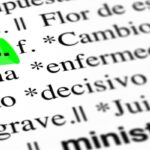We explain what tangible is, what tangible assets are and their differences from intangible assets. Also, examples of tangible goods.

What is tangible?
The tangible is that which can touch. It is a term from Latin tangera verb translatable as “to touch”, and is applied in numerous contexts of daily life. For example, when someone refers to “tangible reality,” they are talking about that which exists in the world in a concrete, physical waywhile “intangible reality” is the complete opposite: that which exists in an abstract, imaginary, ethereal way.
The distinction between the tangible and the intangible is often important and requires specialized differentiation, since not everything that affects our lives or everything we own is necessarily tangible. In the field of culture, for example, this distinction is usually made to cover the entirety of a human concept as complex as that.
Thus, a nation has tangible cultural assets, such as sculptures and paintings in museums. But it also has the symphonies that its orchestras perform, the dances that it performs at its parties and the stories that it tells its children, which are intangible.
Tangible and intangible assets
In the business and financial world, similarly, we often talk about tangible goods or assets and intangible goods or assets. Tangible assets are those that have a physical presentation; while the latter, of course, are those who do not.
Now, They are called assets because they are part of the assets of the company or individual and they represent a benefit or the possibility of receiving one. This feature is important to distinguish it from liabilities or debts. It is important to emphasize that human capital, although it is known by this name, is not part of the tangible assets of a company, since its workers are not things, nor are they part of its assets.
Examples of tangible goods

The following are some examples of tangible assets of a company or an individual:
- Real estate propertiesthat is, houses, buildings or land, which are tangible but cannot be moved from one place to another.
- Machinery, tools and furniturethat is, furniture, objects that can be moved from one place to another.
- Raw material and/or products processed that are in stock.
- Capitals, that is, money in any of its presentations.
Continue with: Intangible
References
- “Tangible” in the Language Dictionary of the Royal Spanish Academy.
- “Differences between the tangible and intangible assets of a company” in Gedesco.
- “Tangible and intangible assets” in Web and Macros.
- “How do Tangible and Intangible Assets Differ?” on Investopedia.





